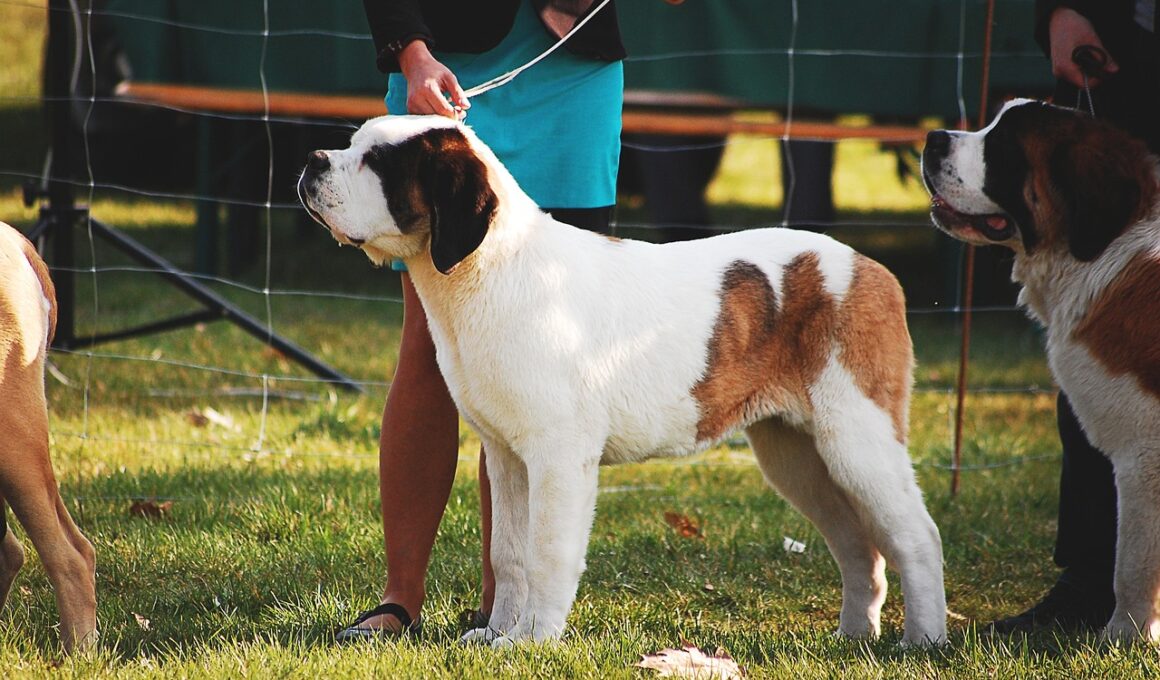Breed Standards Controversies and Debates in Dog Show Circles
Breed standards in dog shows represent a vital aspect of canine competition, dictating how different breeds should ideally appear and perform. However, these standards often spark intense debates within the dog-owning community. Critics question whether these standards create undue pressure on breeders and handlers to conform to rigid physical ideals, sometimes sacrificing the health and temperament of the dogs involved. Some argue that specific physical traits, such as extreme grooming styles or exaggerated features, may lead to health complications in the long run. As discussed in various forums, these discussions often highlight the importance of balancing aesthetics with the well-being and functional abilities of dogs. Establishing breed standards has historical roots but adapting them to account for health considerations is paramount. Breeders must navigate the line between traditional appearances and modern understanding of genetics and health. Ultimately, the question arises whether the existing standards serve more as a guide for appearance or a formula leading to adverse health outcomes. Clarity in these discussions can drive positive changes within the dog show culture, fostering an environment that prioritizes the welfare of the dogs.
One major point of contention arises around the definitions contained in breed standards themselves. Each breed code is supposed to offer a detailed description, yet these descriptions can vary significantly between different dog clubs and associations. Variations may lead to confusion among judges, breeders, and entrants. For example, the differing standards of the American Kennel Club (AKC) compared to the Fédération Cynologique Internationale (FCI) can create discrepancies during international dog competitions. Critics often accuse some organizations of adopting breed standards that might cater to market trends rather than the physical and mental welfare of the dogs. This results in a lack of uniformity that can hinder a breeder’s ability to produce healthy puppies. Detailing essential breed characteristics is important; however, it should not overshadow individual dogs’ well-being. Each breed deserves attention, not merely as a product for competition but as a living creature that needs support. A unified approach that considers not just looks but also behavioral traits may prove beneficial for all parties involved in the process of breeding, showing and loving dogs within competitive environments.
Health Implications of Breed Standards
Health issues related to some breed characteristics are also hotly debated subjects in dog show circles. While dedicated breeds often showcase distinct features, these traits can cause significant health problems. For instance, brachycephalic breeds such as Bulldogs or Pugs face chronic breathing difficulties due to their flat faces. This raises the question of whether the breed standards should be revised to accommodate more health-oriented traits rather than merely aesthetic qualities. Organizations are beginning to realize that prioritizing health over unrealistic standards can serve as a better guideline for breeders. Several breed-specific health registries now track genetic disorders, seeking to educate breeders on avoiding certain traits. This shift emphasizes a growing awareness that aesthetic standards might unintentionally lead to debilitating effects on dog’s health. Likewise, educational programs for both vetting judges and handlers could enhance knowledge about fitness and health as vital roles in breed shows. Advocating for healthy dogs in competitive circles will encourage a sense of responsibility among breeders to emphasize health alongside appearance.
Another area of conflicting opinions arises around the handling and grooming of show dogs, which often reflect the breed standard to an exaggerated degree. The grooming practices can escalate health risks associated with certain breeds. For example, excessive trimming can lead to skin conditions or even injuries in sensitive areas. While aesthetics play a role, many owners and breeders now focus on a dog’s natural beauty. Debate continues over what constitutes acceptable grooming practices. Proponents argue that learning to showcase a dog’s natural attributes will foster better relationships between handler and pet. Critiques of extreme grooming pressure dog show handlers to reconsider current practices. They must focus on showcasing health and well-being just as much as striving for perfect conformity to breed standards. It is necessary to assess how grooming methods affect each breed’s visibility and choices in dog show events. Broadening evaluations towards whole body health rather than mere aesthetic representation offers opportunities for dog shows to evolve positively and responsibly.
The Role of Judges in Dog Shows
Judges are integral to the dog show experience, possessing the responsibility of interpreting and enforcing breed standards. However, judging practices have also come under scrutiny for perpetuating issues of conformity and health. Many judges often rely heavily on their previous experiences and interpretations of breed standards established years prior. This can result in biased preferences towards specific breeds or traits over a more comprehensive understanding of dog health and temperament. Critics argue that training should emphasize health awareness, behavioral assessments, and genetic diversity among breeds. A judge’s ability to acknowledge Deviations, such as genetic variations that grant superior health advantages, can greatly influence a dog’s winning trajectory. Encouraging judges to embrace new understanding and methodologies will lead to more ethical decision-making processes during competitions. As dog shows evolve, so should the criteria by which dogs earn accolades. By integrating a robust health-centric approach into judging criteria, the competitive landscape will transition into a more balanced arena focused not only on looks but on overall health.
The emotional aspects of dog ownership and competition also spur debate surrounding breed standards. Many dog owners form emotional bonds that go beyond merely showcasing one’s pet for accolades. These relationships often evoke strong feelings, identity, and pride attached to their breed. However, high-level competition can strain relationships when dogs experience excessive pressure to perform. Critics argue that this can lead to negative psychological outcomes for both dogs and handlers. It is essential for competitions to mature into encouraging environments that foster bond-building. To maintain a positive atmosphere, event organizers should implement policies that prioritize dog welfare. Support systems for handlers could include educational workshops focusing on mental health and stress management for both humans and animals. By introducing educational programs, dog shows could successfully combat the stress often associated with competitive environments. Creating a culture around healthy dog ownership amidst competition will help reshape the perception of breed standards in dog shows.
Changing Perspectives on Breed Standards
As dog shows continue evolving, so do public perceptions surrounding breed standards and their implications. Advocacy for dog welfare has climbed steadily over recent years, with many organizations dedicated to improving the lives of companion animals. This shift in public opinion has led to projections of what the future of dog shows might hold, including a push for more holistic and humane standards. Breed organizations and clubs may need to reconsider the rigidity of current standards and embrace approaches that prioritize individual dog welfare alongside traditional virtues. As the conversation evolves, so does the focus on responsible breeding practices that develop healthier dogs. A cultural transformation may have started, emphasizing open dialogues around the topics of genetic diversity, health-conscious breeding, and alternative standards. Moreover, promoting open communication between breeders, judges, and dog owners can fortify a collective commitment to nurturing both the artistic and ethical aspects of dog competition. This would encourage future generations to view dog shows less as mere competitions and more as celebrations of the canine-human bond, where health, happiness, and well-being take precedent.
Ultimately, breed standards and their associated controversies highlight the tensions between tradition and modern science in the world of dog shows. Dog owners, breeders, judges, and organizations are navigating uncharted waters in their pursuit of a more ethical framework surrounding dog shows. As the discussions continue, it is evident that promoting healthy and well-adjusted dogs should take priority over rigid adherence to outdated ideals. A unified front advocating for change can inspire dog show enthusiasts to embrace new perspectives that enrich their experiences. Collaborations between stakeholders can lead to tangible shifts in how dog shows are viewed, transforming them into platforms that celebrate the bond between dogs and humans while ensuring their health and safety. Challenging the status quo will pave the way for more compassionate standards that not only honor breeds but allow them to flourish. Thus, the conversation surrounding canine standards must remain dynamic and flexible, driven by shared responsibility to ensure a joyful life for our dogs. Such thoughtful dialogue can result in a landscape where both aesthetics and welfare are deeply intertwined, paving a brighter future for dog shows.


